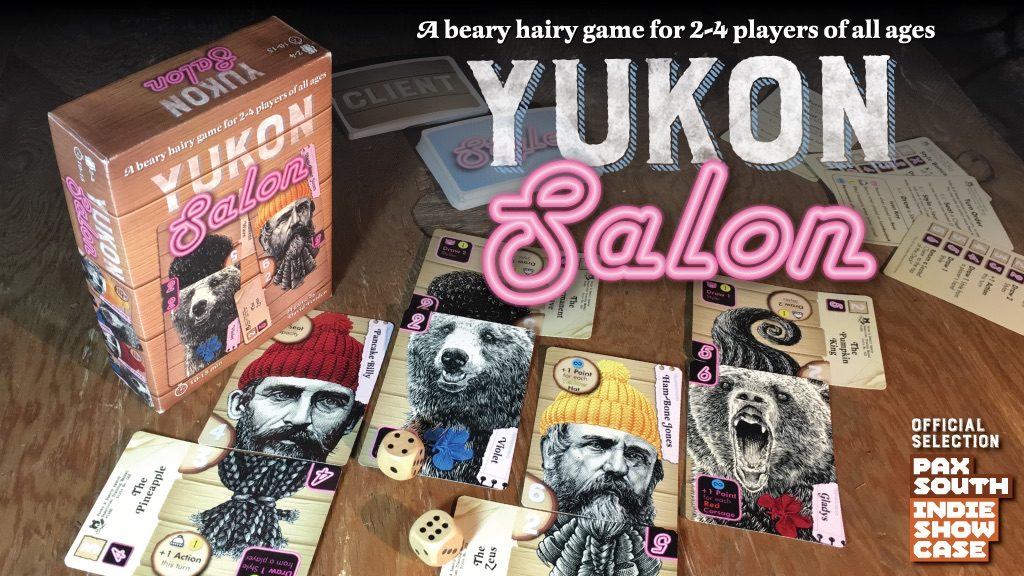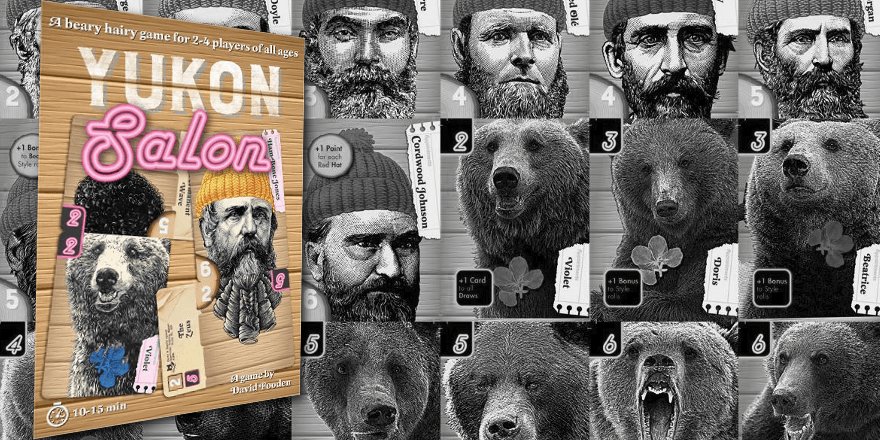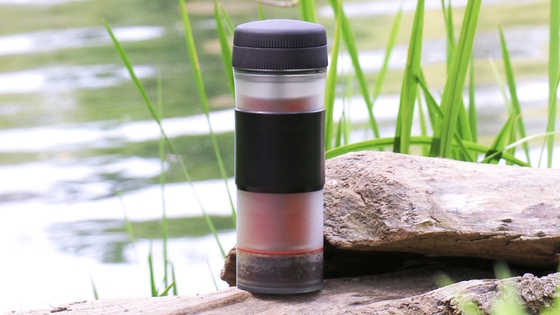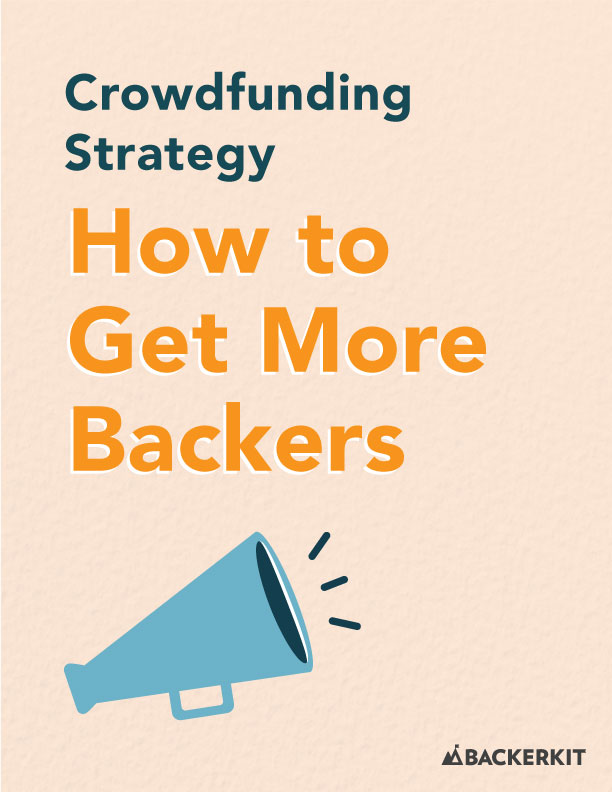David Fooden’s Yukon Salon is an unconventional card game. Its cast of characters include lumberjacks, grizzly bears, and dueling hairstylists. With over two weeks to go before its Kickstarter campaign’s completion, the project had met its funding target and unlocked one stretch goal.
It has also managed to net plenty of blog coverage in the process, with mentions in gaming podcasts For All Intents and Purposes and Going Last, and reviews in blogs such as Junk Spirit Games, GeekDad, Indie Game Report, the Board Game Vault, among many others.

Securing reviews boost a creator’s credibility, and are a handy way to generate publicity and expose the game to a wider audience and new backers. However, getting your game in front of a blogger or publication can be challenging for first-time creators. Fooden and GeekDad senior editor Jonathan Liu share some wisdom from both sides of the divide.
Priming Your Product For Reviews
Liu’s inbox is inundated with pitches and requests for GeekDad reviews on a daily basis. He chooses which games to feature by considering its suitability for the GeekDad readership. “Even if it’s a game that I don’t personally think I would like, we do circulate the pitches among our team of writers to see if anyone else is interested,” he says.
Taste is subjective; what appeals to one reviewer might revile the next. Nevertheless, there are some general ideas on what constitutes an engaging game-playing experience. “Generally what I’m looking for in a prototype is the gameplay,” Liu says. “Are there interesting mechanics at work? Is there an interesting story? Is it fun to play?”
For game creators, extensive playtesting can provide invaluable feedback and ensure the game is ready for public consumption. Yukon Salon underwent many revisions in the lead up to its launch.
“The first prototype had a rule set and went through many rounds of playtesting and iteration. I would playtest it and find out what worked and what didn’t and make changes,” Fooden says. “Refining the graphic design and the look of it was very important as well.”
Fooden asked for playtesting feedback from his friends in the gaming community as well as creators he’d met through events like the PAX South Indie Showcase, where was able to demo his game and generate buzz for his crowdfunding campaign. He also took it to Mox Boarding House for Playtest NW, where prototypes from Seattle game designers are playtested by the gaming community and the general public.
The Best Way to Approach Bloggers
Getting reviewed on an industry-specific blog can help generate publicity and momentum, but timing is of the essence. Sending a press release about your game well ahead of your launch date (and following up via email) can increase the likelihood that it will be reviewed. Liu recommends that game creators get in touch with publications well in advance of their launch to give them a chance to playtest their prototype. “We get a lot of pitches where the project has already launched,” he says. “Or maybe it has launched a week ago or it’s launching tomorrow.” By that time, he says, it’s too late.
Liu urges game creators to budget enough time to make their prototype and send them to reviewers ahead of the campaign. “Arrange for a prototype about a month in advance of the launch if possible,” Liu says.
“We typically say we want to arrange enough time for us to receive the prototype, be able to understand the rules in case there are any questions, play it a couple of times, and have time to write a review by the time the project launches.”
He doesn’t expect to get a firm grasp of component quality from a prototype, although he says more games appear to have finished artwork by the time of launch. In any case, Liu says, he’s willing to overlook artwork or components if the gameplay is compelling.

Fooden sent out review copies of Yukon Salon two weeks before its Kickstarter launch, although he says games with more complexity should be sent out farther in advance. Card games are typically easier to playtest. “Before I launched the Kickstarter, I was mostly reaching people at conventions and going to events at local games stores,” Fooden says. “I reached out to other gamers and blogs, and secured some game reviews from bloggers of various levels of followings online.”
Fooden drafted a form letter that he sent to prospective game reviewers and kept track of his outreach via a “sizable spreadsheet”, and cast the net pretty wide. “I sent out press releases to any place that seemed like it might possibly cover it,” he says. A lot of local news outlets, blogs — anyone with anything to do with board games or card games, or websites that covered funny, quirky stuff.” Fooden reached out to approximately 22 reviewers, most of whom responded; he ended up getting 16 reviews. He notes that “it helped to have a how-to-play video to send them featuring the game artwork”.
Liu concurs, adding that it’s important to keep a blog’s readership in mind. “I always have to pay attention to whether or not it is something people are going to be able to play with their kids. It’s not our primary criteria … but that’s a bonus for our readers.”
Suitability should be front of mind for game creators when they’re pitching publications — for instance, don’t pitch an adults-only game to a family-friendly website. He urges aspiring game creators to read GeekDad’s comprehensive guidelines on how to pitch the publication.
Liu encourages creators to contact GeekDad via email. “We don’t do as much ‘discovery’, where we look for a game on Kickstarter and say, ‘Oh, this looks good — I would like to review it,’” he says. This puts the onus on game creators to be proactive in their outreach strategies. “For new creators or first-time projects, we wouldn’t know about them unless they contact us. Once they’ve launched, it’s too late.”
Case Study: Pascal Press
We asked Pascal Press creator Alan Kalbfleisch how he was able to raise 33% of his funding goal on the first day of the campaign and he shared his story with us.
Finding Your Audience Online
Online forums are a great place to find communities that might be receptive to your product. Alan participated in several tea, coffee and camping-related reddit subreddits to get feedback on his early prototypes. The posts proved popular generating plenty of upvotes and comments and “some of these posts can still be seen in the ‘top’ section for the most popular posts of all time on those subreddits.”
Posting about products on reddit is tricky because you don’t want to get banned for advertising. The larger subreddits are constant targets for astro-turf marketers that try to covertly drop brand mentions into the conversation, so community members are always on the hunt and actively call out any posts or comments that smell of self-promotion.
Alan advises creators to “make sure they do their research and participate in the subreddit before posting their own projects.”
Navigating reddit
Each subreddit will have different rules and tolerance levels for product-focused posts depending on the moderators and the purpose of the subreddit.
Alan’s first post on the /r/coffee subreddit was popular but the moderators asked him to stop posting there because “they wanted their forum to remain as just a place for coffee discussion and not a place for inventors or product developers to market their product.”
Learning from his experience with the coffee mods, Alan made sure to reach out to the mods of the other subreddits he wanted to post on “to let them know of my intentions and to ask what I should or should not say in any of my posts.”
After figuring out which subreddits were most excited about his coffee press and working out what’s acceptable to post with the moderators, Alan started posting prototype updates asking for advice. “This built a sense of community around my product and got people very engaged and attached.”
Alan actively participated in the community, asking for feedback, responding to comments and incorporating suggestions into the product prototypes such as adding a leakproof lid, which helped him earn several early fans. “Luckily, I had enough people following my posts that they began posting my website in the comments sections to get others to sign up for my email list.“
Moving up the Ladder
Alan’s success on reddit allowed him to get a few blogs to write about the Pascal Press. Approaching the press is a lot easier when you can tell editors that you have popular posts on /r/coffee or /r/campinggear. “This made it a very easy sell to get an article written as there was already proof that the product was popular.”
Each blog post linked back to the product website which his team had set up to make it easy for visitors to navigate and sign up for the email list to be notified when the campaign starts.
The reddit community and the blog press coverage helped Alan build a sizable list of people interested in the Pascal Press and several ended up backing the project: “Leading up to our campaign, we had an email list of about 1,000 people. We were able to convert 20% of those to sales within the first 48 hours of our campaign.”
Building an email list of interested people ahead of launch is essential for any campaign that needs to extend beyond the friends and family network to get fully funded. To build this list, you need to have a website with an effective email sign-up form, and then find the right audience for your product.
Alan from Pascal Press was able to find an audience on niche subreddits and leveraged those discussions into blog coverage that helped get his product in front of even more people.
Venturing onto reddit isn’t for everyone. Subreddit communities are full of knowledgeable members that will challenge you on every single detail. You can win over a lot of people if you can answer thoughtfully and use each challenge as an opportunity to demonstrate the care you put into every single design decision.
Case Study: Kings of India Playing Cards
The Kings of India Playing Cards project leaped from $23,111 to $28,230 in funding in just two days in the middle of the campaign. The project update posted just prior to the jump revealed the joker card and additional details on the deck upgrades stretch reward.
Project co-creator Reena Mistry offered insight into the cause for the rise: “When we released that update for the stretch goal, we noticed that we had caught the attention of Mark Frauenfelder, who had posted a message about our update on his site Boingboing.net. That drew a lot of attention to our campaign, which explains that spike in backers.”

Mistry had not contacted BoingBoing about her project. BackerKit contacted Frauenfelder and he told us that he found the project organically and wrote a story about it.
It certainly helped that the campaign page and project updates featured tons of beautiful image assets. The Boingboing write-up is just two sentences along side a video and images directly from the campaign.
The main takeaway here is to continue contacting people that can share your campaign and fill your page with nice image assets that the press can use for their stories.
If you have a compelling product with great media assets, getting a single mention in the right spot can spark a chain reaction of media coverage.

